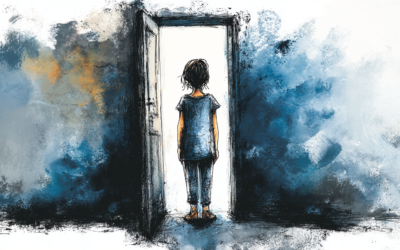Have you ever tried to pat your head while rubbing your stomach? Or perhaps walked a tightrope in a childhood playground? These seemingly simple tasks can become monumental challenges when you live with Bilateral Coordination Disorder (BCD). This condition often complicates everyday activities in profound ways, especially as adults navigate the complexities of modern life. Today, I’ll share my journey with BCD, its impact on activities including driving, and how early interventions can help mitigate its effects.
Understanding Bilateral Coordination Disorder
Bilateral Coordination Disorder, also known as Developmental Coordination Disorder (DCD), makes it difficult for individuals to coordinate movements on both sides of their body. It’s not a matter of intelligence or willpower; rather, it’s a neurological condition that affects how the brain communicates with the body. This disorder can manifest in various ways, such as difficulties with balance, timing, and sequencing of movements.
The Everyday Struggles of BCD in Adulthood
For adults like me, BCD can be an invisible handicap that complicates many routine activities. Simple tasks like typing on a keyboard, cooking a meal, or even buttoning a shirt can become frustratingly complex. However, the impact extends far beyond these basics.
Driving: A Multifaceted Challenge
 Driving is one of the most critical skills for independence in adulthood, and it requires a high level of bilateral coordination. From operating the pedals and steering wheel to checking mirrors and signaling, driving is a symphony of synchronized actions. For someone with BCD, this symphony can quickly turn into a cacophony.
Driving is one of the most critical skills for independence in adulthood, and it requires a high level of bilateral coordination. From operating the pedals and steering wheel to checking mirrors and signaling, driving is a symphony of synchronized actions. For someone with BCD, this symphony can quickly turn into a cacophony.
- Reaction Time: Quick reactions are essential for safe driving. BCD can slow down my response times, making it difficult to react promptly to sudden changes like a pedestrian stepping onto the road or another car swerving unexpectedly.
- Multitasking: Driving demands the ability to multitask—scanning the environment, maintaining speed, and navigating directions simultaneously. BCD can impair the ability to manage these tasks concurrently, increasing the risk of accidents.
- Spatial Awareness: Proper spatial awareness is crucial for tasks such as parking and changing lanes. I often struggle with judging distances and spatial relationships, leading to challenges in these areas.
- Fatigue: The constant effort to coordinate movements can lead to quicker fatigue, reducing the overall time I can drive safely.
Other Affected Activities
Driving is just one of the many activities impacted by BCD. Here are a few more examples:
- Household Chores: Tasks like vacuuming, washing dishes, or folding laundry require coordinated movements that can be strenuous for someone like me.
- Exercise and Sports: Physical activities often demand precise coordination. Whether it’s hitting a tennis ball or following a yoga routine, BCD can turn recreational activities into daunting tasks.
- Professional Tasks: Jobs that require manual dexterity or coordination, such as construction work or even office tasks involving extensive typing, can be particularly challenging.
The Origins of Bilateral Coordination Disorder
Understanding the root causes of BCD is key to addressing and potentially preventing the condition. BCD is believed to arise from a combination of genetic and environmental factors. Researchers suggest that abnormalities in the brain’s development, particularly in areas responsible for motor control and coordination, play a significant role.
Genetic Factors
Genetics can predispose individuals to BCD. If there is a family history of coordination or motor skill issues, there may be a higher likelihood of developing the disorder. However, genetics alone do not determine the outcome.
Environmental Influences
Several environmental factors can contribute to the development of BCD:
- Prenatal Environment: Conditions during pregnancy, such as maternal stress, malnutrition, or exposure to toxins, can affect the developing brain and increase the risk of BCD.
- Early Childhood Development: Limited opportunities for physical play and movement during early childhood can hinder the development of motor skills. Children learn coordination through play, and insufficient physical activity can impede this process.
Preventing and Minimizing BCD in Childhood
Early intervention is crucial for preventing or minimizing the effects of BCD. While it may not always be possible to eliminate the disorder, specific strategies can significantly improve outcomes.
Encouraging Physical Play
Promoting active play from a young age is one of the most effective ways to support motor skill development. Activities that involve running, jumping, climbing, and balancing can help children develop the coordination needed for bilateral movements. Outdoor play, sports, and games that require teamwork and physical interaction are particularly beneficial.
Occupational Therapy
For children showing early signs of BCD, occupational therapy can be a game-changer. Occupational therapists work with children to improve their motor skills through targeted exercises and activities. These professionals tailor their approach to each child’s specific needs, focusing on enhancing coordination, balance, and fine motor skills.
Structured Activities and Routines
Structured physical activities, such as swimming, gymnastics, or dance, can provide children with regular opportunities to practice and refine their motor skills. These activities offer a fun and engaging way to build coordination, strength, and confidence.
Positive Reinforcement
Encouraging and rewarding progress, no matter how small, can motivate children to persist in developing their skills. Positive reinforcement helps build self-esteem and reduces frustration, which can be a significant barrier to improvement.
Living with BCD: Strategies for Adults
While early intervention is ideal, many adults must learn to navigate life with BCD. Here are some strategies that can help:
- Ergonomic Adjustments: Making modifications to the work environment, such as using ergonomic tools and adaptive devices, can reduce the physical strain associated with coordination tasks.
- Physical Therapy: Physical therapists can help adults develop strategies to improve balance, strength, and coordination through tailored exercise programs.
- Mindfulness and Stress Management: Stress can exacerbate the symptoms of BCD. Mindfulness practices, such as meditation and yoga, can help manage stress and improve overall well-being.
- Driving Lessons with Specialists: For those struggling with driving, seeking lessons from instructors specialized in working with individuals with coordination disorders can make a significant difference.
Embracing the Journey
Bilateral Coordination Disorder may present significant challenges, but understanding and addressing these challenges can lead to a more fulfilling life. Whether through early intervention in childhood or adaptive strategies in adulthood, individuals with BCD can navigate their daily activities with greater ease and confidence. It’s essential to recognize the invisible struggles they face and offer support and empathy as they navigate their unique journeys. By fostering awareness and providing practical solutions, we can help those with BCD lead more independent and enriched lives.



